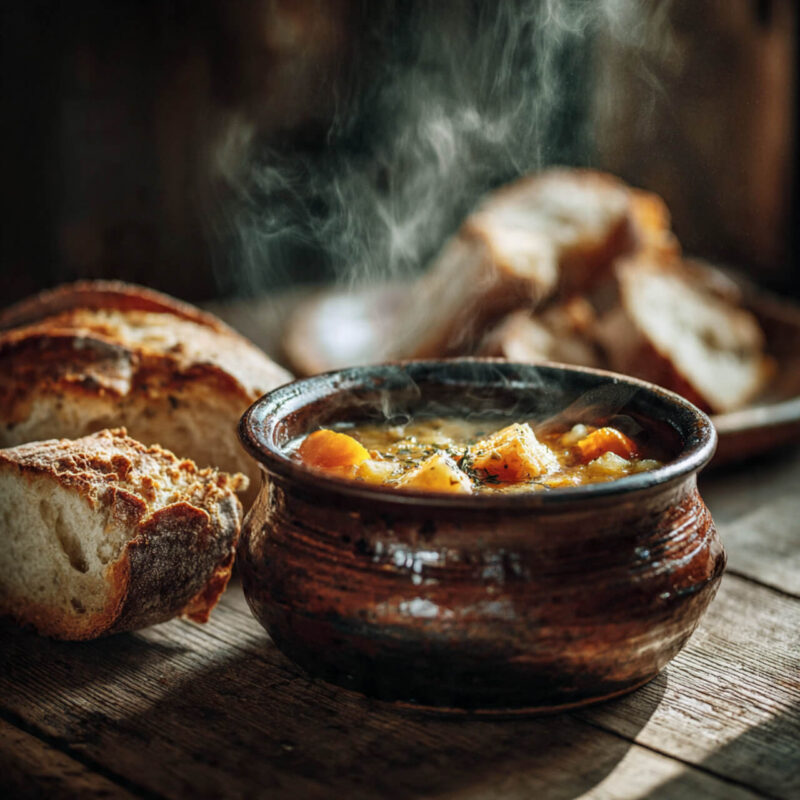autumn self-care Key Takeaways:
- Seasonal depression affects 35% of UK adults—you’re not alone
- Real resilience comes from sustainable practices, not quick fixes or just light therapy
- Start with ONE autumn self-care practice, master it, then add more (research shows this works)

Is It Normal to Dread Autumn? (You’re Not Alone)
I used to dread this time of year the dark colder mornings, endless UK rain, couldn’t function properly. Then I realized that I can’t control the weather, but I can control how I move through it. These ten autumn self-care practices aren’t about bubble baths or toxic positivity. They’re about building real capacity to handle difficulty.
Note: If you’re taking vitamin D for seasonal depression, make sure you’re also taking vitamin K2—vitamin D needs K2 to work properly. Most people don’t know this.
10 Autumn Self-Care Practices for Seasonal Depression
Start Here If You’re Feeling Overwhelmed: Scroll through all 10, but only commit to Practice #2 (Movement) for the first two weeks. It’s the fastest way to shift your baseline energy. Once that’s automatic, come back and add one more.
Or, choose based on your biggest struggle right now:
- Dark mornings drain you? → Start with Practice #1
- Can’t motivate yourself to move? → Start with Practice #2
- Anxiety is your main symptom? → Start with Practice #9
- Feel disconnected from everything? → Start with Practice #7
1. Embrace the Morning Darkness (Instead of Fighting It)
The Practice: Wake at your usual time despite darker mornings. Use darkness as a cue for intentional rituals rather than an excuse to hit snooze.
Why It Works: I spent years fighting UK mornings—five alarms, still couldn’t face the darkness. Fighting seasonal changes drains energy. Accepting them builds resilience. The Stoics called this amor fati: love of one’s fate. (If you want to understand how Stoic philosophy builds resilience, that’s a whole practice unto itself.) Research shows habitual acceptance of difficult emotions improves wellbeing far more than forced positivity.
Start Today: Light a single candle during your morning routine. The ritual signals intentionality and creates a tangible shift from darkness to light.
2. Move Your Body (Even When You Can’t Motivate Yourself)
The Practice: 10 minutes of movement each morning—squats, dancing to your favourite song, or singing in the shower. No equipment, no gym required.
Why It Works: Energy comes from movement, not from waiting to feel energized. Even brief sessions rewire your brain to act without negotiating with itself. Most days I don’t want to move. I do it anyway because discipline beats feelings.
Start Today: Pick whichever sounds least terrible right now and do it tomorrow morning before your brain can argue. Set an alarm with your favourite song if that helps.

3. Practice Cold Exposure (30 Seconds to Start)
The Practice: End your warm shower with 30 seconds of cold water. Build to 60 seconds over the coming weeks.
Why It Works: Cold exposure strengthens your stress response system and improves circulation. Research shows cold water significantly reduces depression symptoms through increased norepinephrine and endorphin release. When your body adapts to voluntary discomfort, the involuntary discomforts like dark gloomy British mornings become easier to handle.
Andrew Huberman’s research on cold exposure
Start Today: Just your legs and arms first. Work up to full body. The resistance you feel before turning the tap? That’s where growth lives.

4. Eat Seasonally (Root Vegetables and Warm Foods)
The Practice: Build meals around autumn produce—root vegetables, squashes, apples, dark leafy greens. Prioritize warm, cooked foods over raw salads.
Why It Works: Traditional Chinese Medicine teaches that eating seasonally supports your body’s natural rhythms. Root vegetables ground you. Warm foods preserve energy your body would spend on digestion during cold British weather. You’re working with nature, not against it.
Start Today: Make butternut squash soup or roasted root vegetables. One seasonal meal per day shifts your entire energy baseline.
5. Set Consistent Sleep Boundaries (Even on Weekends)
The Practice: Choose a bedtime and wake time. Stick to it within 30 minutes, seven days a week.
Why It Works: Autumn’s shortening days disrupt circadian rhythms. Most people let sleep schedules drift, creating cumulative fatigue. Research confirms sleep regularity improves mood, cognitive function, and stress resilience more than any supplement, even more than sleep duration itself.
Start Today: Set your wake time based on when you must get up for work. Count back 7-8 hours for bedtime. No exceptions, including weekends.
6. Do Morning Pages (3 Pages, Stream of Consciousness)
The Practice: Every morning, write three pages of stream-of-consciousness thoughts. No editing, no judgment, just raw thoughts onto paper.
Why It Works: Your mind carries invisible mental load—worries, to-dos, circular thoughts. Morning pages clear this clutter before it shapes your day. This isn’t journaling for posterity. It’s mental hygiene.
Start Today: Grab any notebook. Write whatever’s in your head—complaints, gratitude, anxieties, plans, nothing at all. The content doesn’t matter. The clearing does.
7. Take Solitary Walks (No Phone, No Podcasts)
The Practice: Walk for 20 minutes, three times per week. No phone, no music, no input. Just you and your thoughts.
Why It Works: My husband bought us head torches so we could keep walking as nights drew in—best purchase we made. We even got bioluminescence torches to explore nature in the dark. Walking in the rain used to be my excuse to stay in. Now it’s when I do my best thinking. Solitude isn’t loneliness—it’s the space where clarity emerges. (Though if you’re struggling with feelings of loneliness this season, that’s worth exploring separately.)
Stoic ways to Effectively use Silence
Start Today: Walk your usual route without headphones. Notice the crunch of leaves underfoot.

8. Reset One Room Each Evening
The Practice: Every evening, choose one room and return it to complete order. Kitchen counter clear, living room reset, bedroom clothes put away. One room, fully done.
Why It Works: Clutter creates low-level stress that accumulates. Visual chaos signals mental chaos. But maintaining a perfectly clean house is exhausting. One room gives you a clean slate, literally and mentally without that overwhelm.
Start Today: Pick your bedroom tonight. Put every item where it belongs. Wake up tomorrow to one sanctuary space that supports your nervous system.
9. Practice Box Breathing (5 Minutes Daily)
The Practice: Box breathing—inhale for 4 counts, hold for 4, exhale for 4, hold for 4. Repeat for 5 minutes.
Why It Works: Shorter days and busier schedules spike cortisol. Controlled breathing directly regulates your nervous system in under 5 minutes. Studies show intentional breathwork activates the parasympathetic nervous system, lowering heart rate and anxiety immediately. This isn’t woo-woo; it’s biology.
Start Today: Morning (set your nervous system), midday (reset), or before bed (wind down). Pick one time and make it non-negotiable.
10. Write a Specific Gratitude Inventory (Not Just a List)
The Practice: Before bed, write three specific things you were grateful for that day. Include why each mattered and how it made you feel.
Why It Works: Generic gratitude lists don’t change your brain. Specific, emotionally-connected gratitude does. I used to skip autumn’s small joys—now I actually get excited for Christmas lights and the house smelling like apple and cinnamon. That shift came from noticing what brought joy instead of what I thought should.
Start Today: “I’m grateful for [thing] because [why] and it made me feel [emotion].”
How to Integrate autumn self-care These Practices Without Overwhelm
Don’t try all ten at once. Research on habit formation confirms: starting with one small habit increases your success rate dramatically. Major lifestyle overhauls fail. Small, consistent practices succeed.
Week 1-2: Pick ONE practice. Do it every day.
Week 3-4: Add a second once the first is automatic.
Month 2: Add a third only when the first two are solid.
Small victories count. A 10-minute walk is better than no walk. You’re building capacity, not collecting habits.
When You Want to Quit (Because You Will)
You’ll skip days. You’ll question if any of this matters. That’s not failure, that’s the practice. The difference between people who build resilience and those who don’t isn’t never struggling. It’s returning after struggling. One missed day doesn’t erase your progress. The pattern matters more than perfection.
3 Everyday Mastery Steps You Can Do Right Now:
- Light a candle – Bring intentional light to the darkness (2 minutes)
- Move your body – 10 squats, OR dance to your favourite song, OR sing loud in the shower (5-10 minutes)
- Write down 3 things from today – What happened, how it made you feel (3 minutes)
Then pick ONE practice below to commit to for the next two weeks. Not all 10. Just one.

Building Real Resilience Through Autumn
I spent years fighting UK weather those months in seasonal dread. Then I realized: I can’t control the rain, the darkness, the cold. But I can control how I move through it.
These ten practices won’t make you love autumn. They won’t eliminate seasonal struggle completely. But they will help. They’ll reduce symptoms. They’ll give you strategies that work when vitamin D alone isn’t enough. These autumn self-care practices lay the foundation for beating the winter blues when the hardest months arrive.
This isn’t about being your “best self, it’s about building the capacity to function when the season makes everything harder.
What’s your first step? Pick one practice the autumn self-care list. Try it tomorrow. Even if it helps just a bit, that’s progress.
That’s everyday mastery.

Mr Critic Moment:
“This all sounds lovely, but you know you’re going to fail, right? You’ll try the cold shower once, hate it, and quit. You’ll buy ingredients for seasonal eating and let them rot in the fridge. Remember last January when you swore you’d start fresh? How’d that work out?“
Here’s the truth Mr. Critic doesn’t want you to know:
He’s terrified you’ll actually succeed. Because if you prove you can do hard things, even small ones like 30 seconds of cold water—his power over you disappears.
And if you don’t hear an inner voice, that’s okay too — for some people, it’s a feeling, a tightness, or just the urge to pull back. Whatever form it takes, noticing it is where resilience begins
Frequently Asked Questions
What is the difference between seasonal blues and Seasonal Affective Disorder (SAD)?
Seasonal blues are mild mood changes that come with autumn—feeling a bit down or less energetic. Seasonal Affective Disorder is more severe: persistent low mood, difficulty functioning, loss of interest in activities, changes in sleep and appetite. Around 35% of UK adults experience some form of seasonal mood change, with about 1 in 3 affected by SAD symptoms. If you can’t function or symptoms last more than two weeks, speak to your GP.
How long does it take to build resilience to autumn weather?
Building real resilience takes consistency, not time. If you commit to one practice daily, you’ll notice shifts within 2-3 weeks. Full integration of multiple practices takes 2-3 months.
Can I do the autumn self-care practices if I have clinical SAD?
Yes. These practices work alongside medical treatment, not instead of it. If you have clinical Seasonal Affective Disorder, continue with your light therapy, vitamin D, and any prescribed medication. These 10 practices address the psychological and behavioural side that supplements alone don’t fix. Think of it as: biology + behaviour = sustainable resilience. Always consult your GP if symptoms are severe.
Can you do all 10 autumn self-care practices at once?
You can but best not to. Research on habit formation shows that starting with one small habit increases your success rate dramatically. Trying to overhaul everything simultaneously leads to burnout within weeks. Choose ONE practice for weeks 1-2, add a second once the first is automatic, then add a third only when the first two are solid.
What helps seasonal depression besides light therapy and vitamin D?
Light therapy and vitamin D with K2 address the biological side—they’re important. But they’re not enough alone. You also need practices that build psychological and behavioural resilience: movement without motivation, acceptance of unchangeable conditions, consistent sleep boundaries, breathwork for nervous system regulation, and solitude practices. This post offers 10 evidence-based practices that work alongside (not instead of) supplements and light therapy.

1. Which autumn self-care practice did you immediately resist reading?
2. What does “moving through autumn instead of fighting it” mean to you?
3. If you committed to ONE autumn self-care practice for 14 days, which would create the biggest shift in how you feel?
About Everyday Mastery
Everyday Mastery blends science, mindfulness, and small daily actions to help you build habits that last.
If you enjoy these posts and want to support the writing, you can buy me a coffee — it keeps the kettle (and the ideas) warm.
This is your permission slip to start messy.
We don’t chase perfect here, we practise progress, because that’s Everyday Mastery.
Like this post? There’s more where that came from.
Subscribe to the Everyday Mastery newsletter for weekly reflections and small steps that build lasting resilience.
Kel is the writer behind Everyday Mastery, where she shares the real, messy, and meaningful process of building habits, resilience, and self-belief from the ground up. Her writing blends ancient philosophy with modern science, always focused on small, practical steps that lead to lasting





